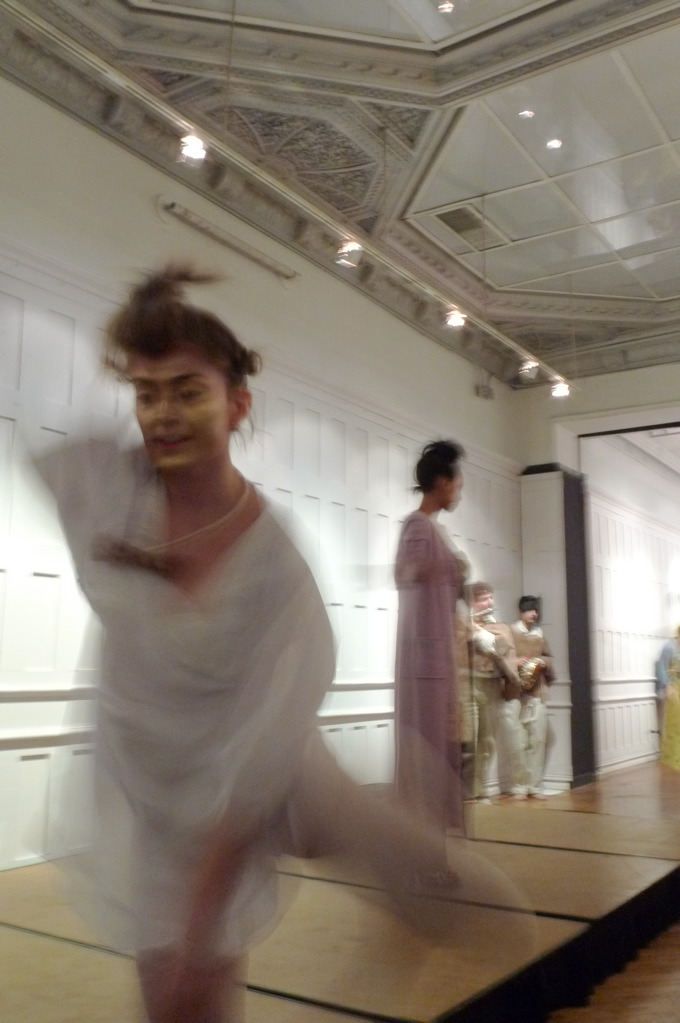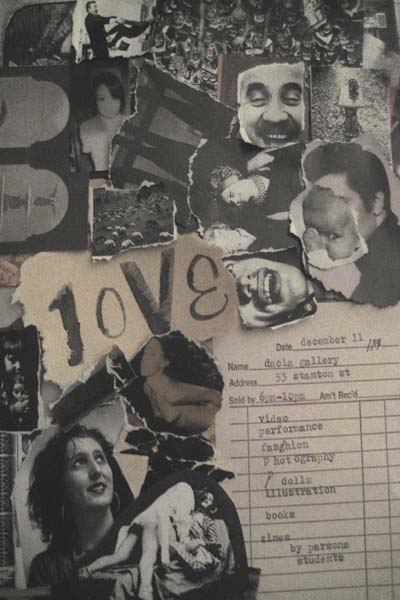Susan Cianciolo, "When Buildings Meet the Sky"
/Photo: Rosalie Knox, courtesy of Susan Cianciolo
by Angeli Sion
Towards the closing of this season’s relatively quiet New York Fashion Week, the National Arts Club in Gramercy was alive with warmth and laughter in a beautiful farrago of vibrant words and movements. This past Wednesday night artist and fashion designer Susan Cianciolo presented her Fall 2011 Collection, When Buildings Meet the Sky, in enchanting moments woven together by a play of prose titled She Stories of the Sky. Written and imagined by an emerging artist and designer Andrea Diodati, the play conjured up interpretive Noh theater with dance and chant complete with a live flutist and tambourine player.
The clothing was appropriately a riff of Japanese dress. In collaboration with Hinaya textile in Kyoto and kimono fashion stylist Hiromi Asai in New York, Cianciolo sent out colorful kimonos and wide obi-like sashes done in elaborate oriental prints. Many looks were accompanied by mask-like make-up, bright color thick around the eyes, and hair piled up in buns high on heads. Tinges of metallic gold could be found in the clothing and on faces. As the character Nobel Lady Time, Cianciolo herself donned a deep peach-orange kimono and golden make-up with her hair piled up high too.
Moreover, Cianciolo’s continuous support for friends and former students was telling not only in the latest February issue of Art Forum but also in the presentation’s program. Young designer Willie Norris contributed his bow ties while another emerging designer Su Beyazit helped out with the styling. To note, a few of the models were also current or former students.
Cianciolo’s collection as a whole was a performance of a collage of soft and vivid colors in rhythm with the fluid movements of the performers and the words.
The clothing was raw. The girls were barefoot. Beauty is found in strange spaces.
Photo: Rosalie Knox courtesy of Susan Cianciolo













